Weight and dimensions
Weight: 30 lbs
Dimensions : 14"x18"x5.5"
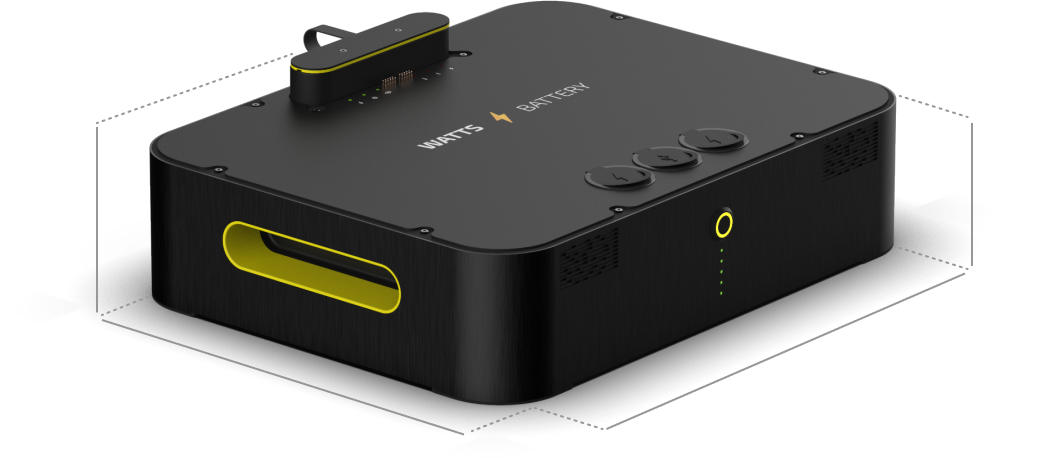
Power
1.5 kW and 3 kW in peak (within 7 seconds)
Limits: up to 7.5 kW per phase
Battery
Capacity of one module: 1.2 kWh
With the maximum number of modules in rack (10) - 12 kWh
The system can scale in capacity without limitation by installing multiple racks.
The device uses cells 18650
Chemistry: lithium - nickel - manganese - cobalt - oxide accumulator (NMC)
Charging period
Charging period- up to 4 hours
Scalable charger allows you to charge all 10 modules in the stack in 4 hour
Built-in Solar Inverter
Each module is able to support up to 1kW of Solar panels with a voltage range of 30-95V
Solar power connectivity scales up from 1kW to 10kW depending on the number of modules installed.
Service temperature
Operating temperature: 14 .. 104 °F
Operating temperature of a charge 32 ..104 °F
Communication
WIFI
Wifi b/g/n
GSM
Ability to install USB modem
Bluetooth
Bluetooth 4.0
Connectors and Connection
Output wiring
Sockets 2x AC 120V , frequency 60Hz,
4x USB 5V
Input wiring
Terminal connectors AC 120V , frequency 60Hz,
Terminal connecttion DC 30-95 V Solar Panel
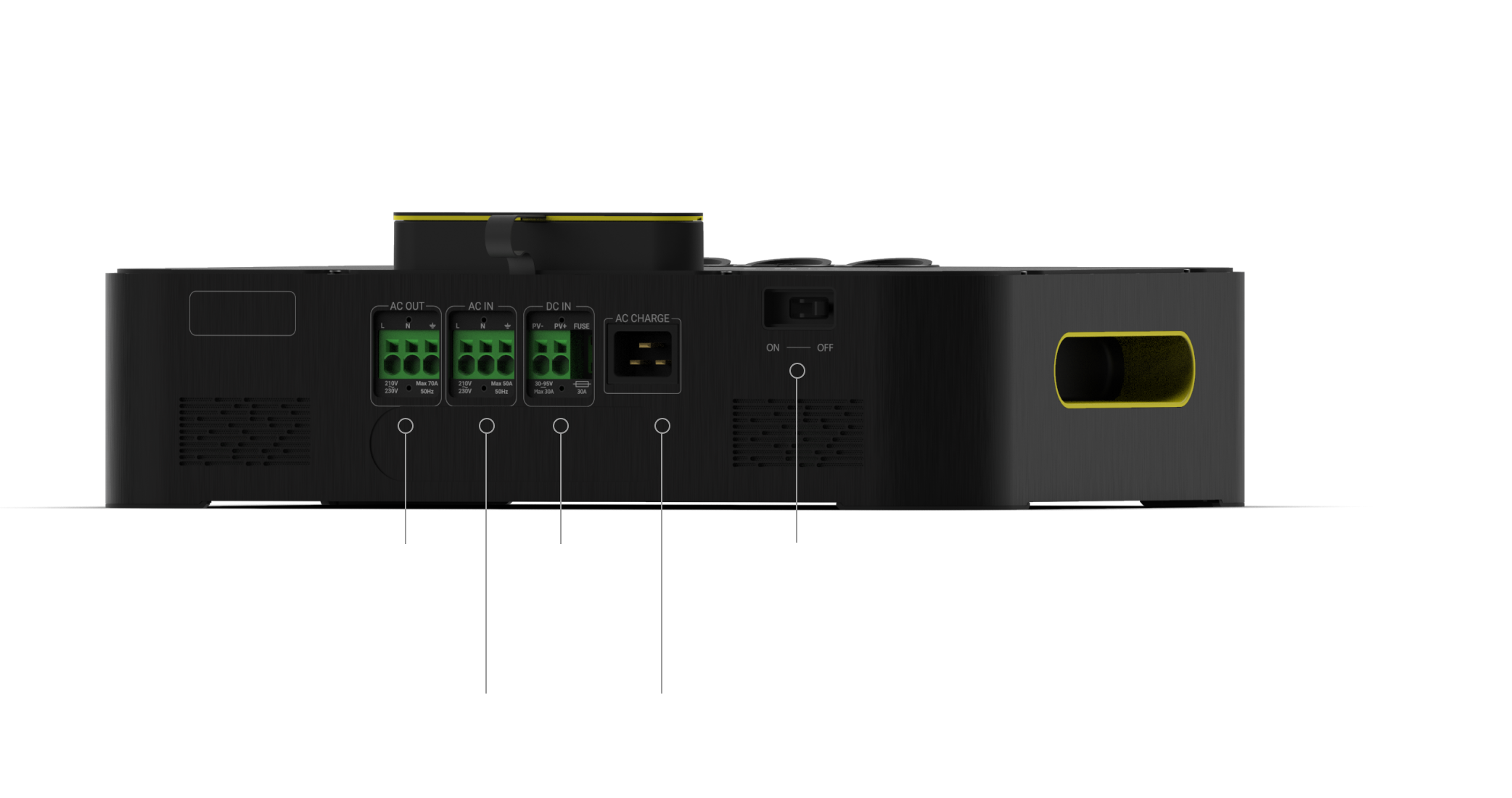
Typical Connection Schematics
1. Connection to the distribution panel of a grid-connected house
This connection type will supply all loads connected on the corresponding phase. Solar panels are directly connected to the WATTS system and Solar energy is used to supply the load, and any surplus is stored in the WATTS system to be used later on the day.
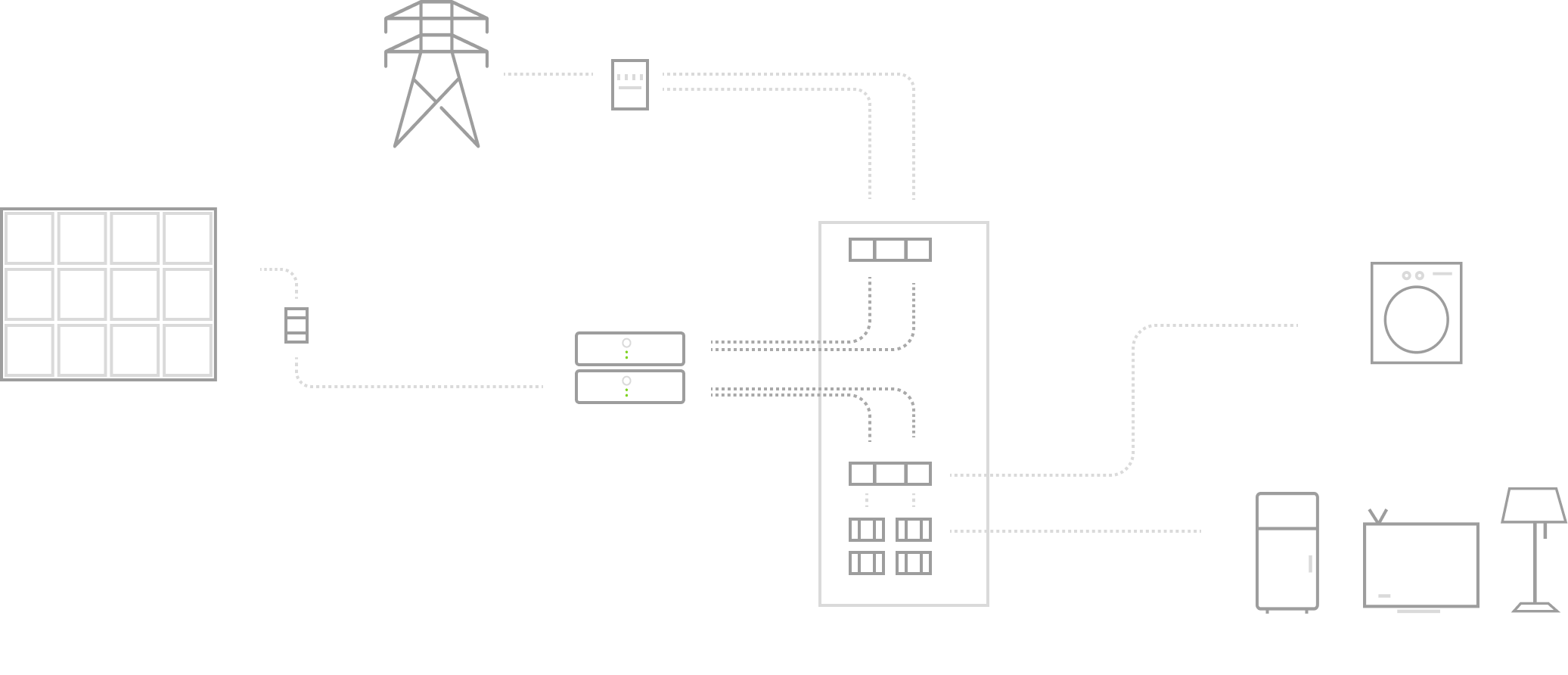
2. Wall socket connection to backup individual appliances
This connection is similar to a UPS operation. WATTS module charges from the wall socket and appliances can directly be connected to the WATTS system sockets.
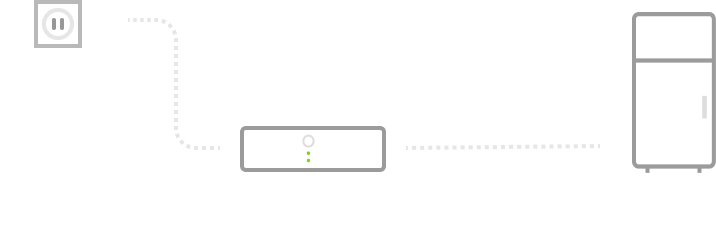
All the necessary components in one device
Each WATTS Battery is a full-featured power supply and energy management system.
We have combined all components in a single package so that the device can be used immediately out of the box.
Solar inverter
Works with any solar panels with the output of 30-95V
Charger
Charges the device from a wall socket a power box
Controller
Manages all the components and delivers information about energy consumption to the cloud
Crossmodule connector
Place devices on top of each other like lego bricks to encreas capacity and power of the system
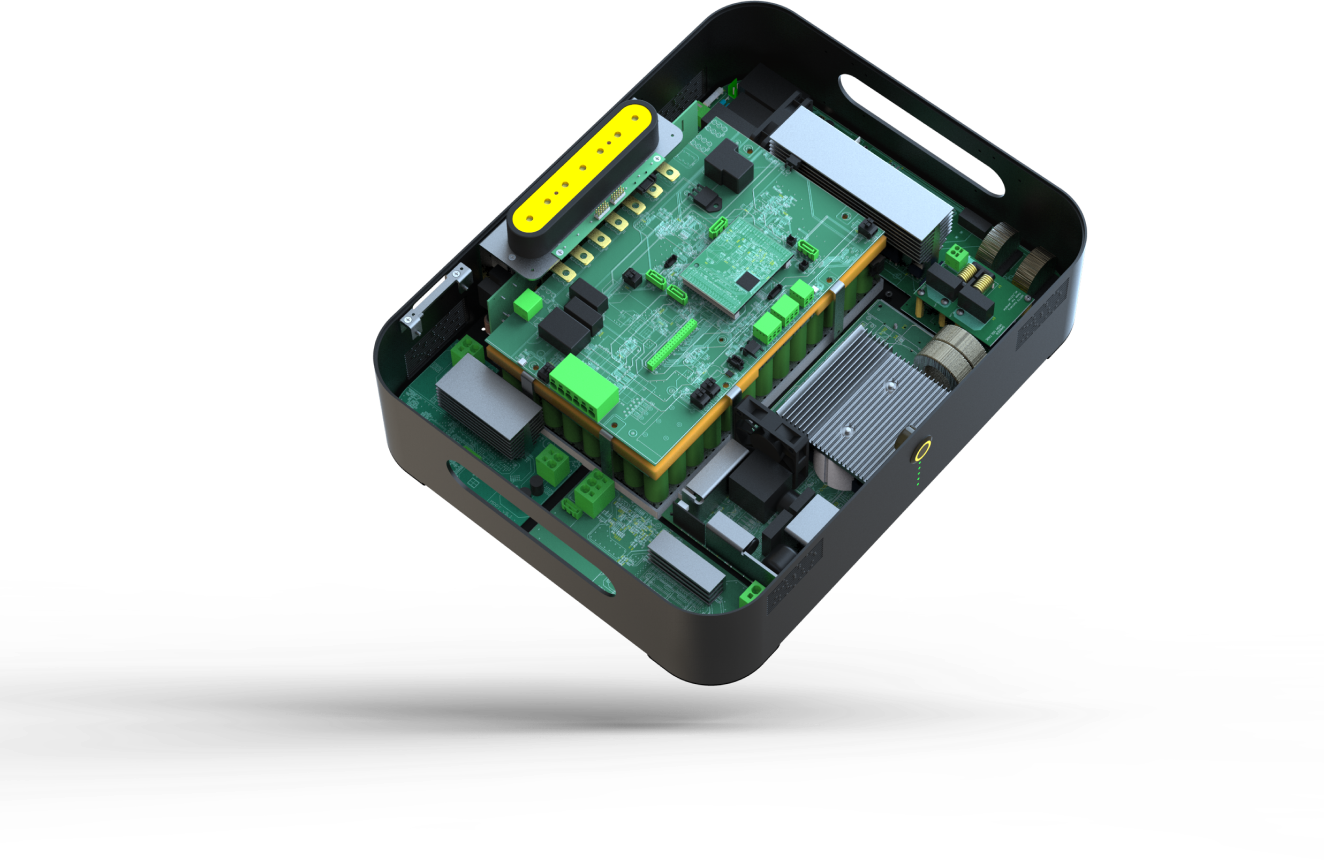
Inverter
Built-in inverter converts direct current to alternating current
Li-ion Storage
Storage with up to 1.2kWh of capacity
Battery management
Protects the battery from operating outside its safe operating area
Warranty
7 years warranty for internet-connected WATTS modules.
WATTS is a smart IoT device that receives regular software updates. With each update, it gets better.
In this regard, we provide an extended warranty when the device is constantly connected to the Internet. In the absence of connection, general warranty is 2 years
Frequently Asked Questions
One module provides 1.5kW/2.2 kW at peak. Please check out this chart for more information
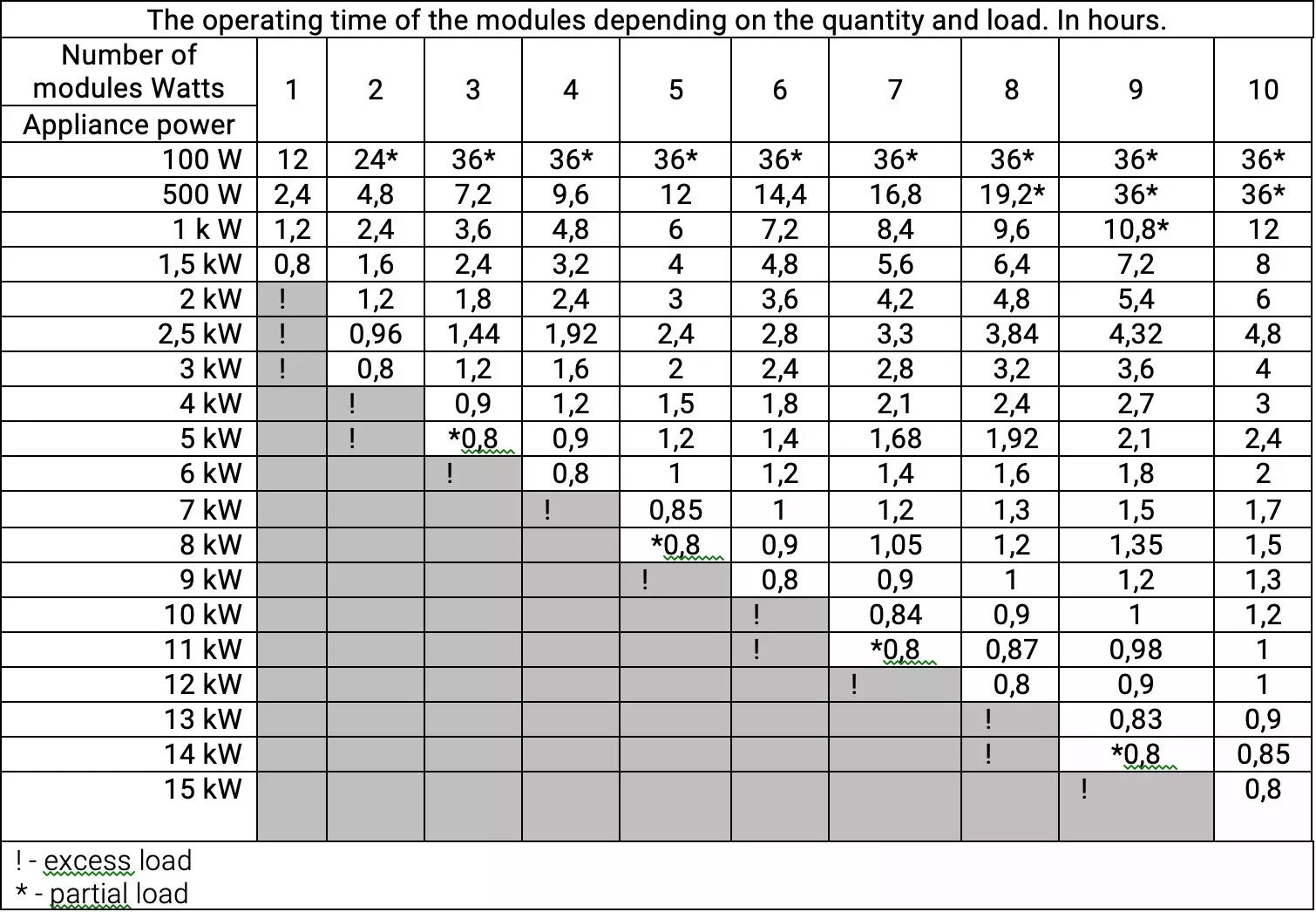
We are confident in the high quality of our products, so we offer you a guarantee for 7 years from the date of purchase of the product.
Our engineers ensure that lithium-ion batteries installed in WATTS can withstand up to 2000 cycles! This will allow you to use one battery much longer than other manufacturers. WATTS Battery offer you the maintenance of your device in good condition by replacing the battery pack at 2000 cycles of full discharges.
More information:
The lifecycle o a battery is the number of charge/discharge cycles a battery can perform until its nominal capacity is reduced to a certain value. In modern batteries, this value is 70-80%. After the end of the life cycle, the battery does not stop working, but loses a certain percentage of its capacity. Modern lead-acid batteries are designed for 200-300 cycles, standard lithium - for 500-800 cycles.
